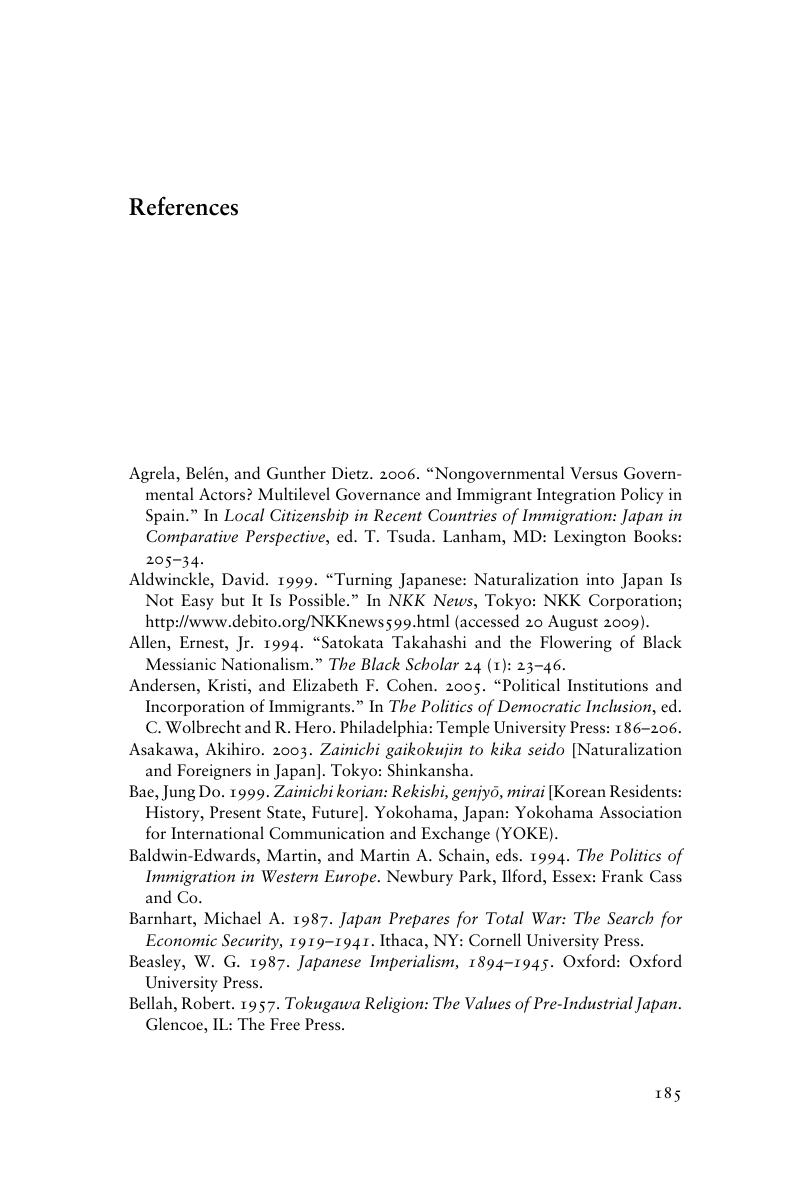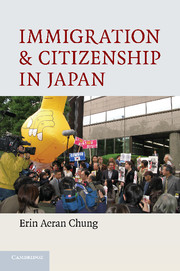Book contents
- Frontmatter
- Contents
- Tables and Figures
- Conventions and Abbreviations
- Acknowledgments
- Immigration and Citizenship in Japan
- Introduction: The Contradictions of Japan's Immigration and Citizenship Politics
- 1 Is Japan an Outlier? Cross-National Patterns of Immigrant Incorporation and Noncitizen Political Engagement
- 2 Constructing Citizenship and Noncitizenship in Postwar Japan
- 3 Negotiating Korean Identity in Japan
- 4 Citizenship as Political Strategy
- 5 Destination Japan: Global Shifts, Local Transformations
- Conclusion
- References
- Index
- References
References
Published online by Cambridge University Press: 03 May 2010
- Frontmatter
- Contents
- Tables and Figures
- Conventions and Abbreviations
- Acknowledgments
- Immigration and Citizenship in Japan
- Introduction: The Contradictions of Japan's Immigration and Citizenship Politics
- 1 Is Japan an Outlier? Cross-National Patterns of Immigrant Incorporation and Noncitizen Political Engagement
- 2 Constructing Citizenship and Noncitizenship in Postwar Japan
- 3 Negotiating Korean Identity in Japan
- 4 Citizenship as Political Strategy
- 5 Destination Japan: Global Shifts, Local Transformations
- Conclusion
- References
- Index
- References
Summary

- Type
- Chapter
- Information
- Immigration and Citizenship in Japan , pp. 185 - 198Publisher: Cambridge University PressPrint publication year: 2010



